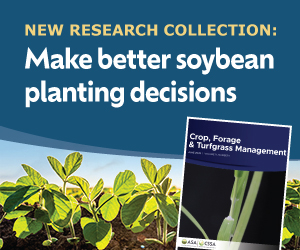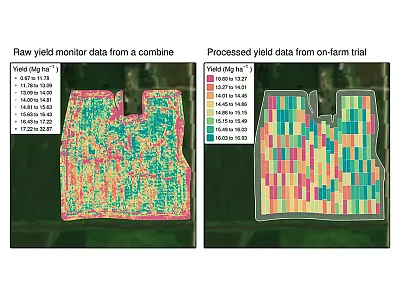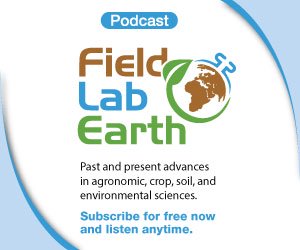Understanding Biostimulants and Their Tie to Soil Fertility
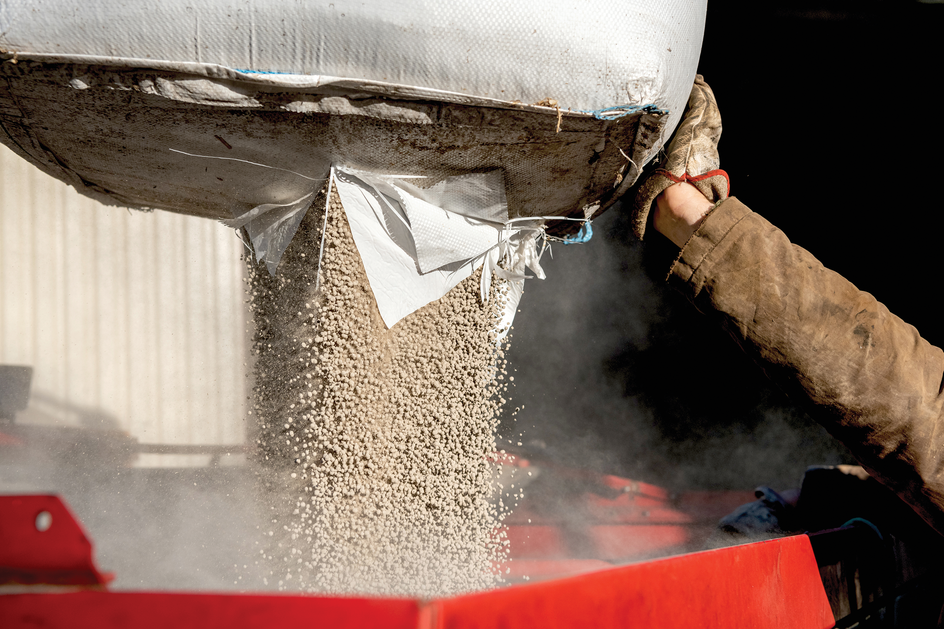

In recent years, biostimulants and biologicals have gained substantial traction in the marketplace with dozens of products available for growers and consultants to choose from. However, biostimulants vary widely in type and mode of action in the plant. To best understand how some of these products may be tied to soil fertility, a deeper understanding of biostimulants and biologicals is worth acquiring. Earn 1 CEU in Nutrient Management by reading this article and taking the quiz.
In recent years, biostimulants and biologicals have gained substantial traction in the marketplace with dozens of products available for growers and consultants to choose from. However, biostimulants vary widely in type and mode of action in the plant. To best understand how some of these products may be tied to soil fertility, a deeper understanding of biostimulants and biologicals is worth acquiring.
Biological versus Biostimulant
The terms biostimulant and biological are often used interchangeably but differ in their meaning. A biological product contains living organisms (as the definition of biology itself infers living), which includes beneficial microorganisms (e.g., fungi or bacteria). On the other hand, biostimulants encompass both living and non‐living substances. Many of the non‐living products are derived from nature, plants, microbes, or their exudates; hence the name biostimulant.
There has been much discussion and several definitions suggested by industry groups and researchers that strongly echo one another. More broadly, academics and industry alike agree that biostimulants are substances or microorganisms that enhance plant growth, nutrient uptake, crop quality or yield, and/or stress tolerance (du Jardin, 2015; Drobek et al., 2019; du Jardin et al., 2020; Castiglione et al., 2021; BPIA & TFI, 2022).
Recently, the Plant Biostimulant Act of 2022 (H.R.7752; see https://bit.ly/HR7752) was introduced to the U.S. Congress to provide a formal national definition for biostimulants and remove ambiguity in the industry:
“The term ‘plant biostimulant’ means a substance, micro‐organism, or mixture thereof, that, when applied to seeds, plants, the rhizosphere, soil, or other growth media, act to support a plant’s natural processes independently of the biostimulant’s nutrient content, including by improving nutrient availability, uptake or use efficiency, tolerance to abiotic stress, and consequent growth, development, quality, or yield.”
While biostimulants can improve nutrient use efficiency, they are not fertilizers and do not provide nutrients directly to the plant. Rather, some biostimulants are designed to enhance the plant’s ability to absorb nutrients from the soil (Calvo et al., 2014). Furthermore, researchers have drawn a line to differentiate biostimulants from biopesticides or biocontrol agents as they do not fit the function of benefiting plant growth as designated in the biostimulant definition (du Jardin, 2015; BPIA & TFI, 2022). Science‐based experimentation with biostimulants may lead to the identification of novel biological molecules and phenomenon—pathways and processes—that would not have been discovered if the category of biostimulants did not exist or was not considered legitimate.
Types of Biostimulants
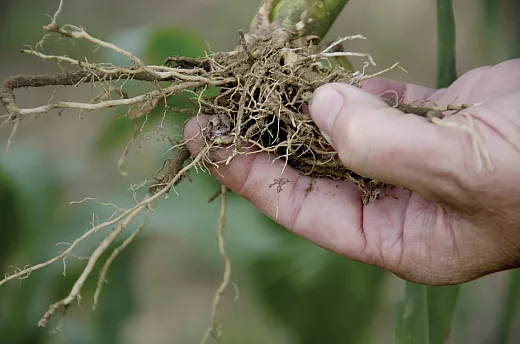
Biostimulants can be synthesized from a wide range of natural (living or previously living) materials, such as plant or seaweeds, humic and fulvic acids, amino acids, or beneficial microorganisms. They may also be derived through the synthesis of purified single molecules from natural or synthetic sources (Calvo et al., 2014; du Jardin, 2015; BPIA & TFI, 2022).
There are dozens of types of biostimulants, each with their unique properties and benefits to crop health. To make sense of the various types, a U.S. Biostimulant Industry Workgroup formed from the Biological Products Industry Alliance (BPIA) and The Fertilizer Institute (TFI) to create the following five plant biostimulant categories (BPIA & TFI, 2022):
1. Microbial Inoculants
These products include beneficial microorganisms that can help improve soil health and nutrient availability/uptake (Rouphael & Colla, 2018). Examples include mycorrhizal fungi like Glomus, Rhizobacteria, Bacillus, Azotobacter, Azospirillum, and Trichoderma, and complex products based on non‐living microorganisms and their metabolites or combinations of various microbes. These products primarily target improving nutrient use efficiency.
2. Algal or Plant (Seaweed) Extracts
Algal or plant (seaweed) extracts are derived from various types of macroalgae species and contain natural growth hormones, micronutrients, and trace elements that promote plant growth and development. Seaweed extracts, as they are more commonly called, are reported to act as chelators to improve nutrient utilization and soil structure. Other research has also indicated the extracts can help plants withstand environmental stresses such as drought, salt, and heat (Calvo et al., 2014). Examples include Ascophyllum, Spirulina, Chlorella, Ecklonia, Allium, and Medicago.
3. Complex Carbon‐Based Products
Humic acid, fluvic acid, and humin make up this category. These are organic (meaning they contain carbon) substances that are formed from the decomposition of plant and animal matter, and the impacts of humics are widely recorded in the scientific literature. They can help improve soil structure, water retention, and nutrient availability and can promote root growth and enhance plant resilience to stress.
4. Protein Hydrolysate and Amino Acids
Free amino acids and peptides are the building blocks of proteins and are essential for plant growth and development. These products are derived from plant, animal, or microbial proteins through chemical or enzymatic hydrolysis. Biostimulants containing amino acids have been shown to enhance nutrient uptake, especially of nitrogen (N), and to promote N assimilation and thus growth of the plant (du Jardin, 2015).
5. Purified Molecules From Minerals, Plants, Animals, and Microbes
Purified molecules are obtained by synthesis and can include organic molecules (polyamines, polyphenols, betaines, oligosaccharides, alginates, carboxylic acids, fatty acids, chitin, and chitosan) and minerals not recognized as plant nutrients (i.e., silicon or selenium). The organic molecules are reported to influence plant cell receptors and therefore stress responses. These biostimulants target improving stress tolerance to environmental variables (abiotic stresses).
When incorporating any biostimulant into nutrient management programs, it’s essential to consider the specific needs of the crops, the growing conditions, and the goal you are trying to accomplish with the biostimulant. Choosing a biostimulant designed to increase root growth may be beneficial for scavenging nutrients or water or aerating compacted soils. Other products might be chosen to reduce negative abiotic stress responses in crops, such as stress responses to drought conditions. If your aim is to improve nutrient uptake or cut back on fertilizer applications, there are a few important nuances to keep in mind.
Biostimulants and Fertilizer Use Efficiency
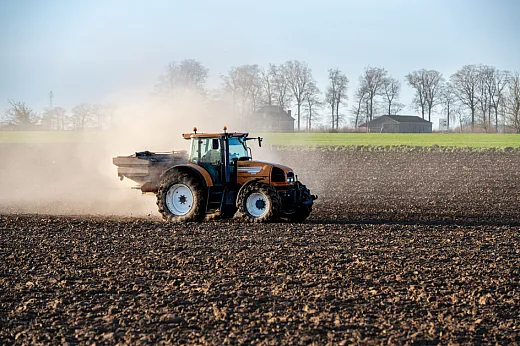
Biostimulants are not fertilizers and do not provide any nutrients to the crop, nor can they replace the nutrients provided by fertilizers. Biostimulants aim to improve nutrient use efficiency through (1) enhanced agronomic efficiency, where applied or residual nutrients are more accessible, mobile, and/or bioavailable to be taken up more effectively, or (2) improved internal utilization of plant where nutrients are more efficiently converted to increased yields.
Though it can be calculated in many ways, nitrogen use efficiency (NUE) is a metric that explains how soil and/or fertilizer N is recovered and utilized by the crop. In corn, research shows that a considerable portion of nitrogen (N) taken up by the crop is supplied by non‐fertilizer sources (e.g., via mineralization, introduction via rainfall and irrigation, etc.). Ranges of 25 to 40% or as wide as 10 to 60% have been reported for nitrogen recovery efficiency (REN) (Kitchen et al., 2022), suggesting that much of the fertilizer N applied is not directly taken up by the plant.
Yet, on average in 2021, the United States corn crop yielded 177 bu/ac with fertilizer N input of 150 lb/ac (USDA‐NASS, 2023). Assuming a bushel of corn contains 0.67 lb of N, the ratio of output to fertilizer input—the partial N balance (PNB) for fertilizer applied to corn—was 79%. If the N input from manure and atmospheric deposition is also considered, the PNB for N input to corn declines to around 64%. The two metrics of N use efficiency show that (1) the soil often supplies the majority of the N taken up by corn (REN <50%), and (2) since inputs exceed outputs (PNB<100%), there is room for improvement without depleting soil organic N. Thus, biostimulants have potential to improve N use efficiency by influencing the processes associated with both soil supply and plant uptake.
Biostimulants may induce plants or microbes to exude enzymes that enhance soil biological activity by breaking down organic materials and minerals to release nutrients (Sible et al., 2021). In doing so, however, soil organic matter may decline. Mycorrhizal enhancement can extend the volume of soil explored for nutrients, which is particularly beneficial for less mobile nutrients such as phosphorus and zinc (Rouphael & Colla, 2018). Biostimulants may also influence the size, distribution, and nature of root systems by stimulating the plant to allocate more resources from photosynthesis to the roots. The diversion of these resources away from leaf canopy expansion and grain fill to support larger root systems or enhanced mycorrhizal colonization, however, can reduce potential yields.
Biostimulants are not fertilizers and do not provide any nutrients to the crop, nor can they replace the nutrients provided by fertilizers. Biostimulants aim to improve nutrient use efficiency.
Enhancing Nitrogen Fixation
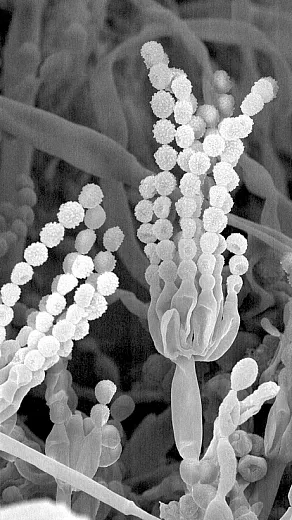
Inoculants have played a major role in the successful cultivation of legume crops. Symbiotic Rhizobium bacteria in soybean and alfalfa crops fix hundreds of pounds of N per acre in root nodules that protect the sensitive nitrogenase enzyme from oxygen. Legume crop yields respond well to inoculation in soils when the crop is sown the first time. Subsequent responses may be smaller if sufficient inoculum often remains in the soil. Changing the bacterial strain can be difficult owing to competition from the existing strains in the soil.
Inoculants for non‐rhizobial bacterial species (e.g., Azospirillum, Bacillus, Gluconacetobacter, Methylobacterium, etc.) are promoted with the promise of supplying N through fixation for grass crops like corn, wheat, or sorghum. Without application or inoculation, endophytic, associative, and free‐living species are estimated to fix around 22 and 29 lb/ac of N for rice and sugarcane crops but less than 4 lb/ac of N for other non‐legume crops (Herridge et al., 2008). These bacteria do not form nodules with roots.
Peer‐reviewed studies on efficacy of such inoculants are limited though existing research reveals that yield responses are environment specific and inconsistent between studies (du Jardin, 2015; Sible et al., 2021). This was evident in recent research (unpublished) at the University of Minnesota where the use of a biological free N‐fixer supplied roughly 20 lb of N at one of six site‐years (Peltier et al., 2023). This response is promising but indicates the product use was highly specific to certain conditions. The inconsistency in biostimulant performance can be due to not only the environment, but also the variation in formulation of the inoculants.
Other Considerations
In a single teaspoon of soil, there is roughly 1 billion bacteria. If the existing soil biome is not conducive to the biological (like a free‐living N‐fixer bacteria), the biological will be overwhelmed and outcompeted by the microbes already present in the soil. Some biologicals may not be able to compete with some existing soil microbiomes.
Also, when using any biological (living) product, it is important to consider that not only does the microbe product have to compete with the natural soil microbes, but prior to its application, it must be kept alive. It is important to ensure proper storage and handling to keep microbial products viable, which may be specific to each product. Furthermore, the compatibility of these biological products with other fertilizers and crop protection chemicals needs to be considered.
And finally, while increased nutrient use efficiency is excellent for reducing nutrient loss from agricultural systems, care must be taken to not “mine” the soil of its nutrient reserves. Biostimulants do not directly supply nutrients and are not fertilizers. Therefore, continued fertilization will be essential to ensure adequate nutrient is available in the soil for the crop with increased uptake. If growth is truly “stimulated” and increased, this may mean the crop will need additional nutrient to supply its growth. This balance will vary by product but should be considered for each biostimulant.
Bottom Line—How to Test Products Yourself
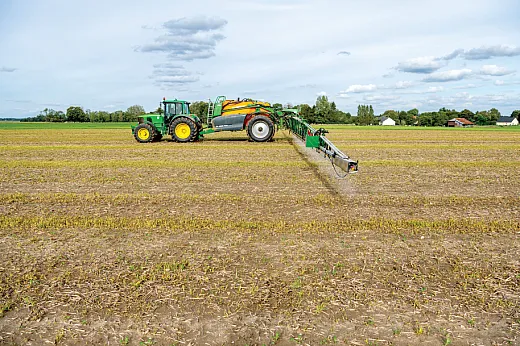
Across the literature, and especially in row crop production, the yield response to using biostimulants remains mixed (Lenssen et al., 2019; Sible et al., 2021). For some biostimulant products, performance is highly specific to the environment, and growers and consultants will have to make room for trial and error in finding the best product for their growing system.
With the wide array of products out there, it will take time for researchers to adequately evaluate them all, and the environment‐specific nature of these products will require even more research to make any mainstream recommendations. That said, a good approach to determine if a product is right for your operation is to test it on your own fields.
Should you want to try incorporating biostimulant products into your fertility program, start by specifically identifying what problem you are looking to address. If it is nutrient uptake or efficiency, also consider the modes of action. Will increasing the root mass be a good starting point, or is your aim to try a biological N‐fixer? Or maybe a humic substance that may increase nutrient availability? Have a specific purpose for the product in mind.
Once you have a product identified, start by trying the product in a couple of field areas with diverse soil properties (e.g., sandy versus clay dominant soils). Replicate your treatments at least three times (four or five replications is optimal), and include a control treatment (without the product) with each replication. It is best to randomize treatment strips throughout your trial area and try to avoid simply splitting a field in half to evaluate. Splitting a field removes the ability to account for spatial variability. If you are evaluating a N product, create a ramp of N rates consisting of your target rate, a lower rate, and a higher rate. Try to vary this by at least 30 lb/ac of N lower and higher (Peltier et al., 2023). Apply each of the N rates with and without the product.
Follow the recommended application rates and timing, and see what works for your system. When testing on‐farm, it is important to keep your other nutrient and crop protection applications uniform. Remember, replication and randomizing strips will ensure that your findings are valid and not due to random chance. On‐farm evaluation in your crop system, soil microbiome, and climatic environment can serve as a great starting point in choosing biostimulants. With there being many to choose from, make sure to have a specific purpose in mind when picking a product.
Remember, use of a biostimulant does not replace other crop management practices. Make sure to keep up proper 4R nutrient management practices to feed your crop along with other crop protection practices.
Start little by little and take time to get to know products; just because it worked or didn’t work for someone else does not mean you will have the same results. Biostimulants are climate, soil, and crop specific. Test out products on small areas and work from there. As we all know, there is no silver bullet in agriculture, and not every product will work on every acre or on every hybrid.
References
BPIA, and TFI. (2022). United States biostimulant industry recommendations to assess the efficacy, composition, and safety of plant biostimulant products. Journal of Regulatory Science, 10(1).
Calvo, P., Nelson, L. & Kloepper, J.W. (2014). Agricultural uses of plant biostimulants. Plant and Soil, 383(1–2), 3–41. https://doi.org/10.1007/s11104‐014‐2131‐8
Castiglione, A.M., Mannino, G., Contartese, V., Bertea, C.M. & Ertani A. (2021). Microbial biostimulants as response to modern agriculture needs: Composition, role and application of these innovative products. Plants, 10(8), 1533. https://doi.org/10.3390/plants10081533
Drobek, M., Frąc, M. & Cybulska, J. (2019). Plant biostimulants: Importance of the quality and yield of horticultural crops and the improvement of plant tolerance to abiotic stress‐a review. Agronomy, 9(6), 335. https://doi.org/10.3390/agronomy9060335
Herridge, D.F., Peoples, M.B. & Boddey, R.M. (2008). Global inputs of biological nitrogen fixation in agricultural systems. Plant and Soil, 311(1–2), 1–18. https://doi.org/10.1007/s11104‐008‐9668‐3
du Jardin, P. (2015). Plant biostimulants: Definition, concept, main categories and regulation. Scientia Horticulturae, 196, 3–14. https://doi.org/10.1016/j.scienta.2015.09.021
du Jardin, P., Xu, L. & Geelen, D. (2020). Agricultural functions and action mechanisms of plant biostimulants (PBs). In D. Geelen & L. Xu (Eds.) The chemical biology of plant biostimulants (pp. 1–30).
Kitchen, N.R., Ransom, C.J., Schepers, J.S., Hatfield, J.L., Massey, R. & Drummond, S.T. (2022). A new perspective when examining maize fertilizer nitrogen use efficiency, incrementally. PLoS ONE 17(5 May), 1–17. https://doi.org/10.1371/journal.pone.0267215
Lenssen, A.W., Olk, D.C. & Dinnes, D.L. (2019). Application of a formulated humic product can increase soybean yield. Crop, Forage & Turfgrass Management, 5(1), 180053. https://doi.org/10.2134/cftm2018.07.0053
Peltier, A., Naeve, S. & Kaiser, D. (2023). Strategic farming: Let’s talk crops! session talks biologicals on corn and soybean. University of Minnesota Extension. https://blog‐crop‐news.extension.umn.edu/2023/02/strategic‐farming‐lets‐talk‐crops_13.html
Rouphael, Y. & Colla, G. (2018). Synergistic biostimulatory action: Designing the next generation of plant biostimulants for sustainable agriculture. Frontiers in Plant Science, 871(November), 1–7. https://doi.org/10.3389/fpls.2018.01655
Sible, C.N., Seebauer, J.R. & Below, F.E. (2021). Plant biostimulants: A categorical review, their implications for row crop production, and relation to soil health indicators. Agronomy, 11(7). https://doi.org/10.3390/agronomy11071297
USDA‐NASS. (2023). Chemical use survey. https://quickstats.nass.usda.gov/results/50DFA24D‐16D1‐3DF6‐A345‐82E67824EF9A#5812F8D6‐EF01‐3E0D‐AAFA‐AAE94B35DC47
Self-Study CEU Quiz
Earn 1 CEU in Nutrient Management by taking the quiz. For your convenience, the quiz is printed below. The CEU can be purchased individually, or you can access as part of your Online Classroom Subscription.
- Biostimulants include both living and non-living substances while biologicals are only living substances.
- True.
- False.
- Biostimulants like humic acids and fulvic acids are considered organic because they
- can be used in certified organic agriculture.
- are derived from natural substances.
- are carbon-based products.
- cause organic matter accumulation.
- The amount of N contained in the harvested grain corn crop in the United States in 2021, expressed as a percentage of the fertilizer N applied, was about
- 25%.
- 40%.
- 79%.
- 100%.
- When implementing field trials, what is the minimum number of replications required?
- Two.
- Three.
- Five.
- Eight.
- Which type of biostimulant may help to increase nutrient use efficiency by extending the volume of soil explored through a symbiotic relationship?
- Rhizobium.
- Humic acids.
- Mycorrhizae.
- Bacillus.
- Which of the following biostimulants is a biostimulant but not a biological?
- Bacillus.
- Azotobacter.
- Trichoderma.
- Spirulina.
- Without inoculation, endophytic, associative, and free-living species are estimated to fix around 22 and 29 lb/ac of N for
- non-legume crops.
- rice and sugarcane.
- corn and wheat.
- legume crops.
- Which natural plant health process is NOT improved with biostimulants?
- Disease resistance.
- Stress tolerance.
- Nutrient use efficiency.
- Crop quality or yield.
- The increase in plant N uptake in response to application of fertilizer N, divided by the amount of N applied, is called recovery efficiency. What is a typical range for N recovery efficiency in corn expressed as a percentage?
- 5 to 24%.
- 10 to 60%.
- 79 to 100%.
- >100%.
- This group of biostimulants includes minerals not recognized as plant nutrients.
- Algal or plant (seaweed) extracts.
- Complex carbon-based products.
- Protein hydrolysate and amino acids.
- Purified molecules from minerals, plants, animals, and microbes.
Text © . The authors. CC BY-NC-ND 4.0. Except where otherwise noted, images are subject to copyright. Any reuse without express permission from the copyright owner is prohibited.



